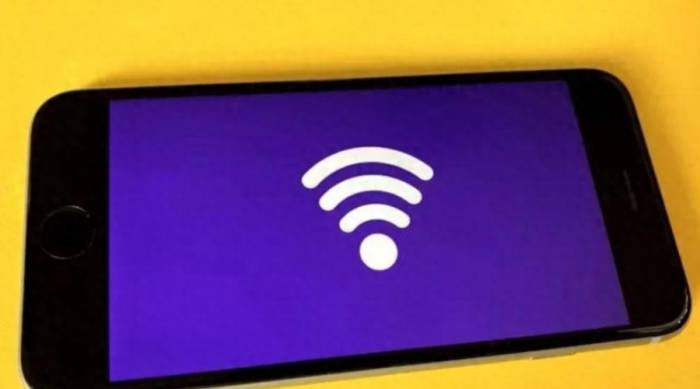Qualcomm's latest chip brings artificial intelligence to Wi-Fi
FastConnect 7900 relies on AI to improve connectivity while reducing power consumption.
The wireless spectrum is always very "crowded", and if you have ever tried to connect to Wi-Fi in a crowded airport or stadium, you would know the pain that comes with congested spectrum usage. This is why the industry is constantly coming up with ways to make the most of the available spectrum. The latest example is Qualcomm's introduction of the FastConnect 7900 chip at the Mobile World Congress in Barcelona.
Qualcomm promotes the FastConnect 7900 as an "AI-enhanced" provider of Wi-Fi 7, which the company sees as an opportunity to create more reliable wireless connections. The chip will also better integrate different technologies such as Wi-Fi, Bluetooth, and ultra-wideband for consumer applications. Additionally, the chip can support two connections on the same device on the same frequency band.
The emergence of FastConnect 7900 coincides with the wireless industry's renewed focus on the reliability of the latest generation of wireless technology standards, Wi-Fi 7. The emphasis is also on increasing throughput and reducing latency, which is a contribution made by each generation of Wi-Fi.
Advertisement
AI-Enhanced Wi-Fi
"Wi-Fi is a bit like the Wild West," said Javier del Prado, Vice President of Mobile Connectivity at Qualcomm. "There are all kinds of devices, congestion, devices coming in and out, access points performing this operation, access points performing that operation - ensuring service is very difficult." Del Prado stated that artificial intelligence is the "perfect tool" to change this situation.
The key to the functionality of FastConnect 7900 is the chip's ability to detect which applications the device is using. Different applications use Wi-Fi in different ways: for example, streaming video may require more data throughput, while voice chat needs to prioritize low latency. After the chip determines the applications in use, it can optimize power consumption and latency according to the specific situation.
Using artificial intelligence to manage wireless spectrum connections is not a new issue or solution, but Qualcomm's chip benefits from running everything on the device. "It has to run on the device to be effective," Del Prado said. "We need to make decisions at the microsecond level."In other words, using the Wi-Fi connection itself to transmit information on how to adjust the Wi-Fi connection goes against the purpose of AI management from the start. By the time the chip receives the information, it is already outdated.
Equally important: the chip does not consume electricity—on the contrary, it saves power overall. "These are quite simple models," says Del Prado. "This is not an artificial intelligence with 5 billion parameters. This is a much smaller model. The key performance indicators are speed and accuracy."
Del Prado indicates that the power consumption of the chip is negligible. In fact, because the chip can optimize power consumption based on the running applications, it can save up to 30% of the device's power consumption.
Wi-Fi, Bluetooth, and Ultra-Wideband Merged into One
In addition to cellular networks, Wi-Fi is the most common way our phones connect to the world. But this is not the only technology—Bluetooth can be used for devices like wireless earbuds, and Ultra-Wideband (UWB) can also be used for item tracking (such as Apple's AirPods) and applications like remote locking and unlocking of cars. All three technologies heavily rely on proximity and distance measurement to maintain wireless connections.
"All these use cases use proximity and use different technologies," says Del Prado. "Different technologies bring different benefits. There is not always one technology that fits all use cases. But this creates complexity."

Del Prado states that Qualcomm's FastConnect 7900 will hide this complexity. "We make it technology-agnostic to consumers."The last trick offered by FastConnect 7900 is the ability to host two Wi-Fi connections on the same frequency band. This chip is built upon the previous generations of FastConnect. "We have introduced what we call 'hybrid synchronization,' which is the capability to handle multiple channels simultaneously on the 5 and 6 GHz bands," said del Prado.
Del Prado indicated that a new feature of the 7900 is the ability to stream audio over Wi-Fi. Qualcomm refers to it as "XPAN," which is a dedicated channel for audio that is only available on the 5 GHz and 6 GHz bands.
This is significant because these bands can provide higher audio quality for devices compared to Bluetooth operating on the 2.4 GHz band. Del Prado stated that by dedicating a separate channel specifically for audio, the 7900 chip can deliver better audio quality without succumbing to the usual pressures when multiple connections require the same wireless signal. "This is something that Bluetooth currently cannot do because it has limited bandwidth," said del Prado.
Qualcomm has already provided samples of the FastConnect 7900 to its customers, namely manufacturers of smartphones and similar devices. Del Prado estimates that the first products featuring this chip will hit the market in the second half of this year. "When the next round of high-end Android phones comes out later this year, they should support this feature."It seems like you've provided some non-standard characters and spaces, but no actual text to translate. If you have a specific text in Chinese that you'd like translated into English, please provide it, and I'd be happy to assist you.
 tech
tech 2024-08-29
2024-08-29 192 Comment
192 Comment